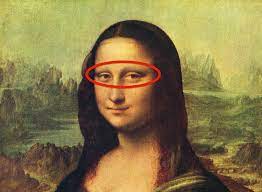The average museum-goer will regard a painting generally considered a masterpiece for 27 seconds, though the median amount of time that a person studied one was for 17 seconds. That might seem like evidence that social media and mobile devices have ruined our attention spans, it makes sense that even with millions of people giving them a look in person for years.
The Scream
Many people only know expressionist Edvard Munch by his tribute to a panic attack he had the year before when a particularly vivid sunset left the sky blood red, someone wrote “can only have been made by a madman” in the upper left-hand corner. As Munch’s painting was critically bashed at the time, it was presumed that it was some disgruntled viewer who defaced the piece that would go on to be for a time the most expensive painting in the world.
Mona Lisa
The subject of Leonardo da Vinci’s portrait has been inconclusively identified as Lisa Gheradini. It was sent on its way to being the most famous painting in the world first by being stolen in 1911. Then in 1919 Marcel Duchamp made a defaced parody of its postcard version, and they hint to how everyone can miss the symbols looking them straight in the face.
Supper at Emmaus
Caravaggio wasn’t just a controversial painter of dark, “blood and thunder” He was the kind of man who would get in trouble with the law for throwing rocks at guards. His papal connections allowed him to get away with that sort of thing until having to flee Rome in 1605 for killing a pimp over a fight brought on by a tennis game. Four years before that crime, Caravaggio included what may well have been a little tribute to the need for secret lives in the early days of Christianity.
Olive Trees
The Olive Trees was one of a series of tributes he painted of a grove during time when he was allowed off the grounds of the institution. What went unnoticed until 2017 was that the painting was in a sense a piece of accidental? By that is meant that the impression of a grasshopper leg was left in the canvas, as conservator Mary Schafer found when going over the painting with a magnifier. She also found at least a blade of grass and other bits of debris.
Guernica
Pablo Picasso’s 1937 piece on the aerial bombardment of the town of Guernica, a show of power by Francisco Franco’s fascist government and the ascending Third Reich, is so rich with symbols that despite its movie theatre screen size that the pioneer of cubism managed to hide some in there that it took decades even for the dedicated professionals to find them. It doesn’t help that for many people, the hidden symbol is a bit problematic.












